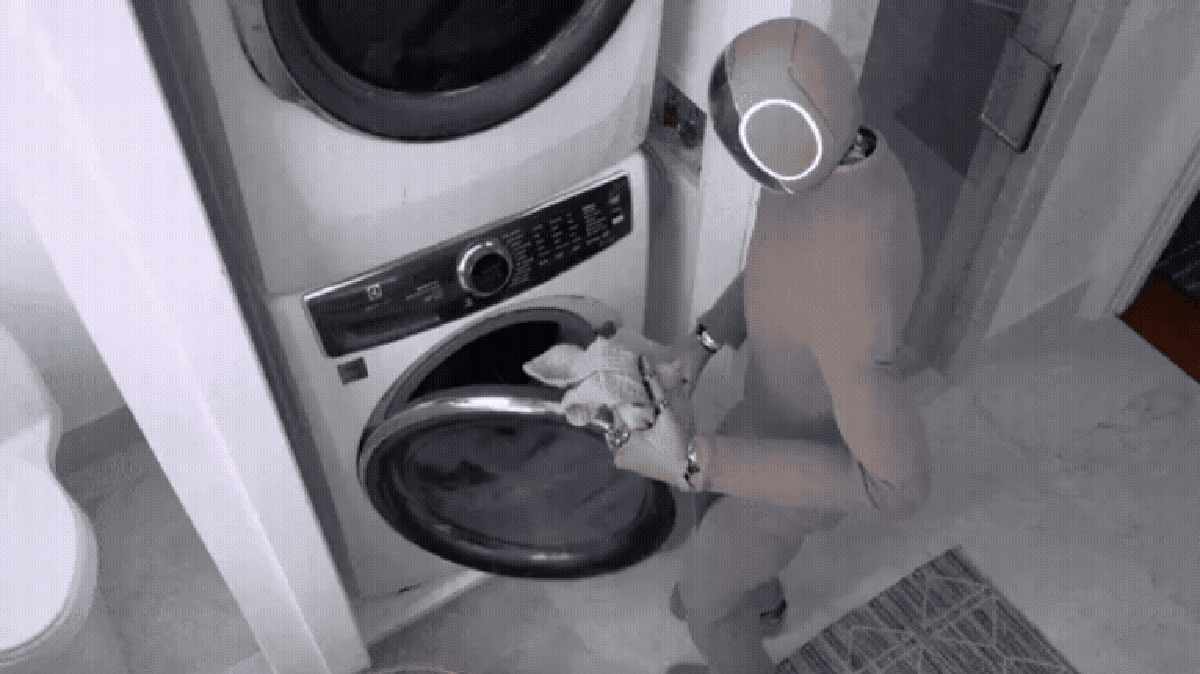
Ever since the first smart vacuum cleaners were introduced, visions of a Jetsons-like future with multifunctional robot maids have reignited the collective imagination. Now, this fantasy has taken on a new form with the launch of Neo, a 1.68-meter humanoid domestic robot developed by Norway’s 1X Technologies.
- Between Neo and Sophia: Introducing 5 humanoid robots worth approximately 1 million reais
- The era of digital cupid: See how AI is changing dating apps to ensure you get the perfect match
Designed using artificial intelligence for tasks like loading the dishwasher, folding clothes, and finding objects in the refrigerator, Neo seems to represent a new step in the human-machine relationship.
But behind the futuristic look and hefty price tag (US$20,000 to buy, US$499 per month for a subscription plan), Neo doesn’t even come close to the autonomy of friendly Rosie from the comics. When the first buyers receive the robot in 2026, it will be able to autonomously perform some basic tasks, such as answering the door and bringing glasses to the kitchen. More complex cases rely entirely on a human operator controlling the machine remotely from an office in California.
Cameras, sensors, and microphones will be open indoors, allowing robots to collect data, learn how to behave around the home, and start new activities in the future. Joan Fabreau, a UTFPR professor specializing in AI and domestic robots, said the project represents significant progress on mechanical and electronic aspects, but is still far from the promised autonomy.
- “AI Commerce”: Magal will begin operating a purchasing tool using artificial intelligence. Let’s see how it works
— I have been researching autonomous robots for over 10 years, but the first time I saw a robot open a door on its own was at a competition held in Italy this year. This challenge is enormous because it is not enough for the robot to move. He needs to understand the environment, anticipate the situation and react naturally, just as we do unconsciously. Neo, for now, the only thing he does independently is not fall – Favreau explained.
According to Favreau, it makes sense to focus on humanoid shapes with arms, hands, and an upright posture. In addition to the world being designed for bipedal humans, the human shape could theoretically allow robots to reach shelves and doorknobs. Neo weighs 30 kilograms and is designed with a synthetic tendon-mimicking motor that limits force and speed for safety, which CEO Bernt Børnich defines as “safety-proven.”
- From advertising on social media to payment methods: You’re already buying things with artificial intelligence, you just don’t know it
Instead of the robust mechanical systems common in the industry, the robot employs motors with artificial tendons designed to mimic human muscle movements with controlled force and speed. Therefore, even in the event of a fall, the risk of injury is minimized. As a precautionary measure, families with young children will be excluded from the initial testing phase.
The manufacturer said in the ad that the robot was also made to recognize when someone speaks to it and respond to commands. It can also recognize objects around it and use “memory” to carry on conversations. The company says Neo can also schedule medical appointments, set birthday reminders, and save items to a shopping list. But the real challenge lies in the learning curve required for robots to deal with home variables.
5 humanoid robots, 5 different pockets: price and uses
From home assistant to advanced research partner — discover the public humanoid robotics landscape and the value it contains
— Homes are much more complex than factories and warehouses. Objects change locations and there are countless variables that the robot needs to interpret, such as children, animals, liquids, stairs, etc. In industry, everything is organized so that machines can function. It’s important to understand that this type of launch is more of a future promise than a reality, says Fernando Osorio, a researcher at ICMC-USP and a member of the Mobile Robotics Institute.
/i.s3.glbimg.com/v1/AUTH_da025474c0c44edd99332dddb09cabe8/internal_photos/bs/2025/G/j/sEx3iwQEaNNhc3gzRQyA/robo-neo1.jpg)
1X Technologies has made no secret of the fact that for now, most of Neo’s functions are overseen by operators who view the environment through the robot’s lens. The company’s president himself acknowledged the complexity, saying, “If you buy Neo, you’re accepting a kind of social contract. Without access to user data, there’s no way to improve the system.”
- The era of “brain rot”: How AI and social media contribute to cognitive impairment
The company guarantees that customers can define access restrictions, blur faces and demarcate exclusion areas, but data collection for artificial intelligence training is key to the business. For Sérgio Amadeu da Silveira, a sociologist at the Scientific Committee of Cyberculture Researchers (ABCiber), the company’s logic replicates what is already practiced on social networks.
— By introducing cameras, sensors, and microphones into the home, robots will increase companies’ power over users’ intimate lives, providing users with details of their daily lives, habits, and consumption patterns that can be used to shape behavior and decision-making. What actually exists is automated replication of simple tasks based on economic models of large-scale data collection. So the question is not the robot, but who controls the robot.
/i.s3.glbimg.com/v1/AUTH_da025474c0c44edd99332dddb09cabe8/internal_photos/bs/2025/0/m/cMIE3cSBAbF6VbUGcqtQ/robo-neo-5.jpg)
In practice, the system absorbs videos recorded in the user’s home and uses this information to build a model of the real world. This database teaches robots to identify objects and understand routines and different contexts. While AIs like Chat GPT rely on vast amounts of text extracted from the internet, AIs learn by interacting with their physical environment.
This warning was backed up by Joanne Favreau, who noted that the first robot vacuums equipped with cameras filmed people in the bathroom, and the images were leaked.
— It is essential that active mechanisms exist to protect privacy, such as anonymizing data and filtering intimate situations. I can’t believe that the manufacturer will solve this problem.
1X Technologies predicts that by 2026, this humanoid will be able to perform most domestic activities without the need for continuous human supervision. However, the CEO anticipates that the robot’s performance may be inconsistent, classifying this flaw as “robot slop” (a term referring to the rudimentary and developing nature of the first AI systems).
The control and programming of Neo’s activities is handled by a dedicated application. This allows owners to schedule the most complex tasks at specific times controlled by a remote operator. 1X Technologies ensures that humans operating robots remotely undergo background checks and are continuously monitored.
/i.s3.glbimg.com/v1/AUTH_da025474c0c44edd99332dddb09cabe8/internal_photos/bs/2025/3/l/WOI1K2SfC1DwReneZirw/robo-neo-4.jpg)
The arrival of machines like Neo in the country represents a passage through the growing technological frontier of physical AI. This evolution represents the moment when previously purely digital artificial intelligence gains the ability to act and interact directly with the physical world, becoming no longer just software but an agent with a real presence.
Simply put, physical AI combines the processing power of an AI (the “brain”) with the behavior of a robotic system (the “body”). Its biggest differentiator is its ability to recognize, reason, and execute complex tasks in dynamic environments, and this is all Neo promises to do in the future.
— Physical AI is when machines can move things, bump into things, and interact with people. Here comes the complexity. Robots must perceive their environment, make real-time decisions, and take sequential actions, all using sensors that provide an imperfect view of the world. The challenge is to make AI, which previously produced only text and images, deal with gravity, friction, imbalance, and limited energy. says UTFPR professor and robotics expert Marco Aurelio Wehrmeister.
From this perspective, Wehrmeister credits 1X Technologies with a purpose beyond the final product.
— The company acknowledges that it sells a data collection platform, not a finished product. This is similar to what happened with the first iPhone or the first self-driving car. The initial cost was very high, but the goal was to learn while using. Neo fulfills this role. Collect data and enable improvements to the physical AI models that are later delivered.



